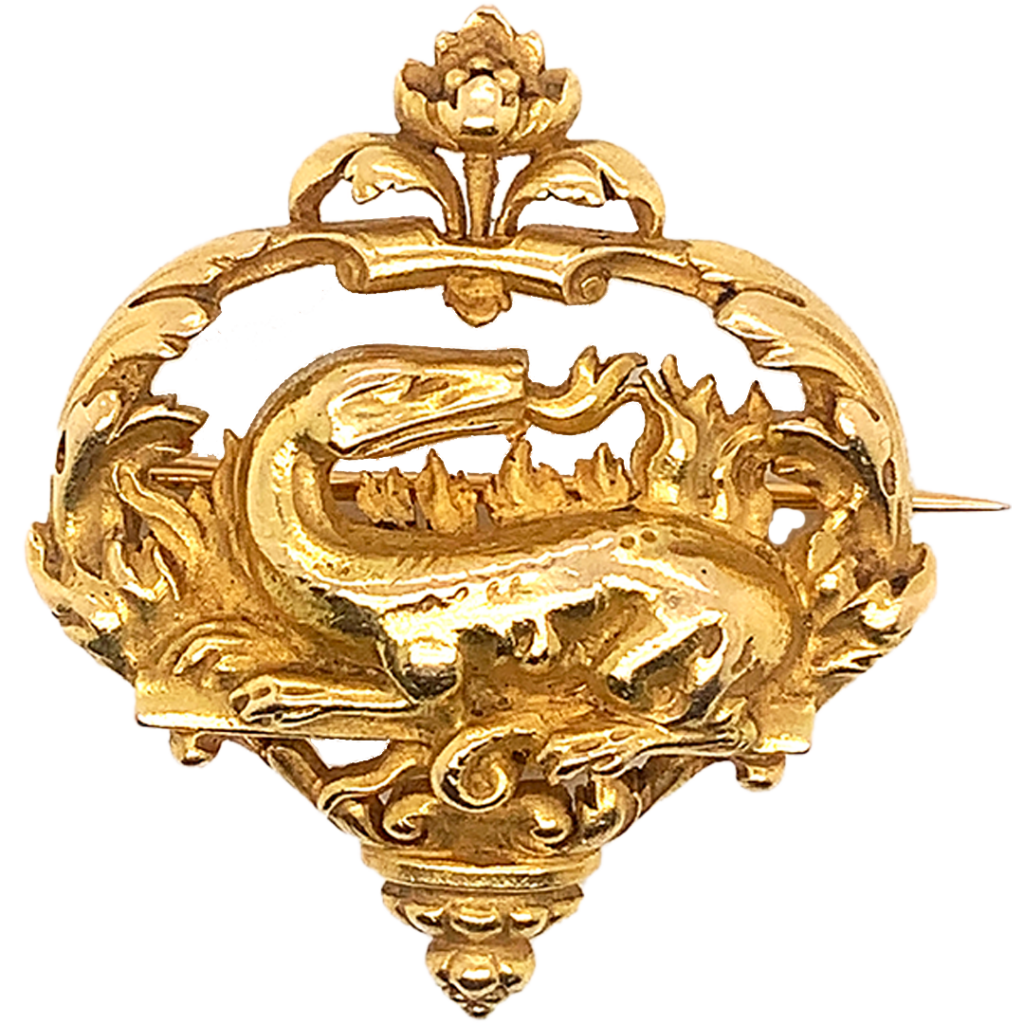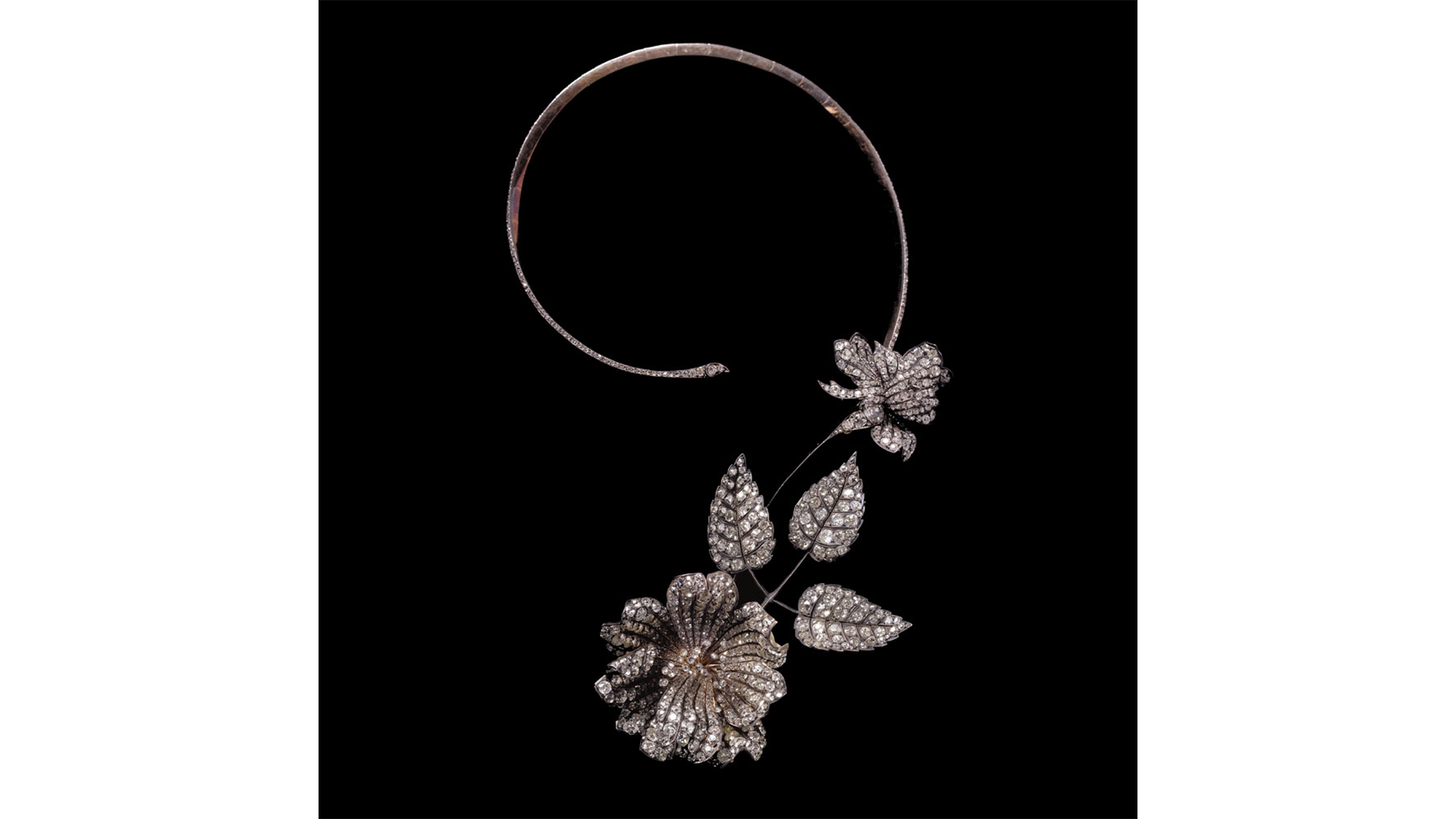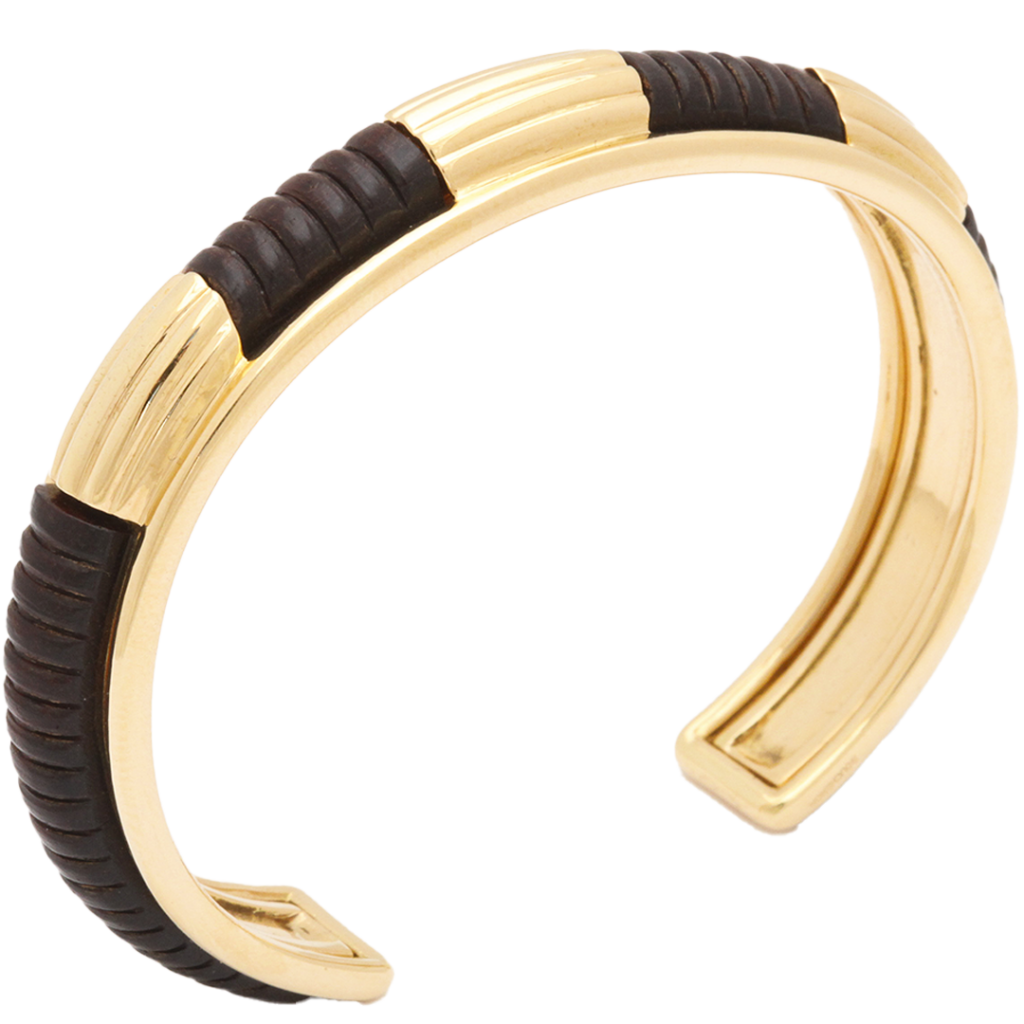Elevating a simple symbol to high jewelry status became one of Boucheron’s most innovative designs: The Question Mark necklace, created in 1879 is still produced today. The concept was simple, a necklace with an opening and no clasp that could easily slide onto a neck with no assistance necessary, while the stem of the question mark cascaded into feather or floral motifs. As simple as it appears it exemplifies the innovation of the design house founded in 1858 by Frédéric Boucheron at the Palais-Royal in Paris.
When he was just 14 years old, Boucheron began a jewelry apprenticeship. He came from a family of clothiers, so he was very aware of the lightness and fluidity of fabrics and lace, an aesthetic he always brought to his gold work. In 1866 Boucheron set up his first workshop, where he began creating his own pieces. It was a fortuitous time as the French Second Empire (1852-1870, under the rule of Napoleon III) was a time of grand opulence and Boucheron counted much of Europe’s aristocracy as clients, including Napoleon’s wife, Empress Eugenie.

Boucheron Wins Gold Medal
A year later, Boucheron earned the gold medal at the 1867 Paris Exposition Universelle. It was then that his generous nature revealed itself. In an unprecedented move Boucheron, had the names of the artisans from his workshop engraved on a marble plaque paying tribute to their talents that helped the firm win the coveted prize. In 1878 Boucheron won the Grand Prix (first prize) at the same fair. His creations for that event included a necklace showcasing a 159-carat sapphire in a blue that matched the eyes of the wealthy American Marie-Louise MacKay who had commissioned the jewel. Boucheron went on to win more accolades in the coming years, including a Legion of Honor from the French government.
Boucheron was willing to take creative risks that paid off for the firm. Sometime around 1880, he revived an ancient engraving technique used for diamonds. Using this skill, the firm engraved diamonds with arabesque patterns and floral motifs. By 1887 Boucheron’s reputation as one of the best jewelers of the time was firmly established and that same year he was invited to the auction of the French Crown Jewels. He purchased some diamonds at the auction and made a ring using one of the stones as a declaration of his devotion to his wife, Gabrielle.
Boucheron Moves to Place Vendôme
Boucheron has the distinction of being the first jewelry house to set up shop on Place Vendôme, choosing number 26, a corner location where light flowed freely into the windows causing the diamonds and gems to sparkle and shimmer enticingly. The year was 1893 and the firm remains headquartered in the same location to this day.
The French jeweler was a long time supplier of jewelry to the Russian Imperial family, including a little crown made especially for Empress Alexandra Feodorovna for her engagement. In 1897, Boucheron ventured to Moscow where the firm opened a store, the first one outside of Paris. The company later expanded to London and New York.
As the 20th century approached and styles changed, so did Boucheron. The firm became prominent in the Art Nouveau movement, creating pieces with enamel and jewels with nature themes. Boucheron had been instrumental in bringing back the art of plique-a-jour, an enameling technique that uses no backing, creating the effect of stained glass, which was used extensively in Art Nouveau jewelry.
The Next Generation at Boucheron
In 1902 Frédéric passed away and his son Louis took over running the business and in the process continued to grow the firm’s status. One of the most impressive commissions for the Maison took place in 1928 when the Maharajah of Patiala showed up at Boucheron with 7,571 diamonds and 1,432 emeralds, which were then crafted into 149 pieces of jewelry.
Louis had a stellar reputation and in 1930 he was named Official Guardian of the Imperial Treasure of Persia, an honor bestowed by the Shah of Iran. In addition, Louis had two sons, Frederic and Gerard, both of whom traveled extensively presenting private shows for elite clients. After Gerard passed away his son Alain took the reins of the firm in 1962 and brought back the use of wood, rock crystal, coral and turquoise embellishing them with gold and diamonds.
The firm was family owned until 1994 when it was acquired by the Gucci Group. Boucheron is now owned by the Kering Group, with over 30 locations globally.
Featured image (top of page): Magnificent Diamond Rose Open Collar by Boucheron, circa 1890. Courtesy Faerber-Collection. Photo credits: ©Katharina Faerber (@faerbercollection).
Authored by Amber Michelle



